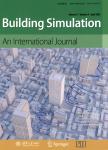Analysis of the effect of passive measures on the energy consumption and zero-energy prospects of residential buildings in Pakistan
精力消费和在巴基斯坦的居住大楼的零精力的前景上的被动措施的效果的分析作者机构:School of Mechanical and Manufacturing EngineeringNational University of Sciences and TechnologyIslamabadPakistan
出 版 物:《Building Simulation》 (建筑模拟(英文))
年 卷 期:2021年第14卷第4期
页 面:1325-1342页
核心收录:
学科分类:08[工学] 081304[工学-建筑技术科学] 0813[工学-建筑学]
主 题:building energy simulations net zero-energy passive climate adaptation measures climate change energy consumption Pakistan
摘 要:Climate change can adversely impact the thermal comfort and energy efficiency of the buildings stock. The South Asian countries are particularly vulnerable to the adverse impacts of climate change specially in the form of rising temperatures and increasing frequency of heat waves. The passive building design measures can be useful in mitigating and adapting to the climate change by increasing energy efficiency and reducing greenhouse gas (GHG) emissions. In this study various passive climate change adaptation measures (PCAMs) have been used individually and in form of combinations in order to analyze their impact on the energy efficacy of residential buildings in Pakistan. It has been found that the natural ventilation and front green wall are the most efficient options for reducing the overall energy consumption. By implementation of these PCAMs, cooling demand can be decreased by 27.75% while heating demand can be reduced by 35%. Secondly, the prospect of net zero-energy building and reduced CO2 emissions are also studied. It has been shown that building can achieve net-zero energy on an annual basis at every orientation and it can attain the status of nearly zero-energy building on a monthly basis. Moreover, emitted CO2 can be reduced by 31% by using the renewable energy.



